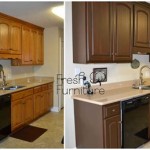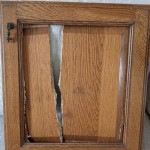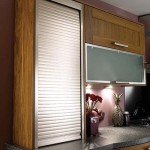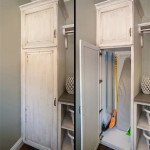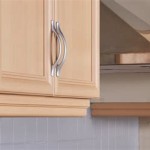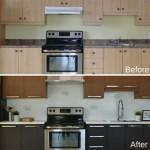Refinishing Kitchen Cabinets Not Real Wood: A Comprehensive Guide
Kitchen cabinets are an essential part of any kitchen's functionality and aesthetics. While real wood cabinets offer timeless beauty and durability, they can be expensive and difficult to refinish. If your kitchen cabinets are made of a non-wood material, such as laminate or thermofoil, refinishing them can be a more budget-friendly and manageable task. Here's a comprehensive guide to help you refinish kitchen cabinets not real wood:
1. Preparation is Key
Before you begin refinishing, it's crucial to prepare the cabinets thoroughly. Remove all hardware, doors, and drawers. Clean the surfaces with a degreaser solution to eliminate grease and grime. Use a sander or sanding sponge to lightly sand the surfaces to create a smooth and even base for the new finish.
2. Choose the Right Paint or Resurfacing Material
The type of paint or resurfacing material you use will depend on the material of your cabinets. For laminate cabinets, a high-quality bonding primer is essential to ensure the paint adheres properly. Oil-based paints or epoxy paints are typically recommended for laminate and thermofoil cabinets. For melamine cabinets, you may need to use a specialized melamine paint.
3. Applying the Finish
Once you've chosen your paint or resurfacing material, apply it according to the manufacturer's instructions. Use a brush or roller to apply even coats, allowing each coat to dry completely before applying the next. For a more durable finish, consider applying a clear topcoat to protect the paint from wear and tear.
4. Refinishing Drawers and Doors
If you're refinishing the drawers and doors separately, remove the old hardware and sand them lightly. Apply a coat of primer and allow it to dry. Paint or resurface the drawers and doors using the same method you used for the cabinets. Once the paint has dried, reattach the hardware.
5. Reassemble and Finishing Touches
Once the cabinets, drawers, and doors are refinished, reassemble them. Install the hardware and make sure all components fit and function properly. Add the finishing touches by painting or staining the walls or backsplash to complement your new kitchen cabinets.
Tips for Success
- Use a sanding block or sponge to avoid over-sanding and damaging the surface.
- Allow ample drying time between coats to prevent peeling or cracking.
- Test the paint or resurfacing material on an inconspicuous area first to ensure it adheres properly.
- Ventilate the area adequately while working to avoid fumes.
- Consider hiring a professional if you're not comfortable refinishing the cabinets yourself.
By following these steps and tips, you can successfully refinish kitchen cabinets not real wood, transforming your kitchen into a refreshed and inviting space.

How To Paint Laminate Cabinets Without Sanding The Palette Muse

Should I Paint My Kitchen Cabinets Helix Painting

How To Paint Pressed Wood Kitchen Cabinets Choice Cabinet

Avoid These Mistakes How To Paint Cabinets That Are Already Painted Grace In My Space

How To Paint Laminate Cabinets Without Sanding The Palette Muse

Painted Wood Cabinets Vs Stained A Questionnaire Kylie M Interiors

The Best Way To Paint Kitchen Cabinets No Sanding Palette Muse

Tips And Ideas How To Update Oak Or Wood Cabinets Paint Stain More

Farmhouse Check In A What We Chose Edition Stained Wood Or Painted Cabinets Emily Henderson

Diy Cabinet Refacing Budget Friendly Made Easy Wisewood
Related Posts

